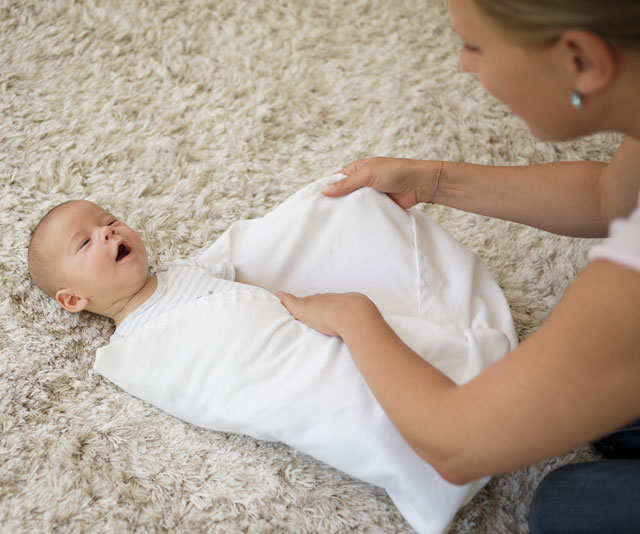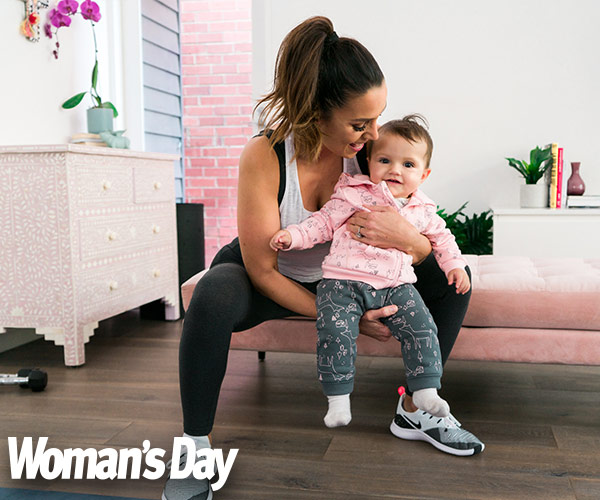Children grow and change so quickly that it’s often hard for parents to keep up. Young babies develop fastest of all, and even though the problems they may encounter are common, that doesn’t make them any easier for overwhelmed and overtired new parents to deal with.
Colic, cradle cap, nappy rash, baby eczema and reflux are some of the most widespread concerns.
Here’s a guide to common newborn afflictions and how to treat them:
Colic
What is it?
It’s estimated that around one in three babies suffer from colic, which is generally defined as uncontrollable and unexplained persistent crying in an otherwise healthy child. All babies cry, but a colicky baby will regularly cry for up to three hours or more each day and look particularly uncomfortable – perhaps drawing up his knees, screwing up his face or passing wind – while doing it. It’s most common in the afternoons and evenings, but can happen at any time.
As any parent who’s dealt with a colicky baby can tell you, it can be a particularly taxing time. However, colic generally goes away (often as mysteriously as it first appeared) by four months of age.
What causes it?
No one knows for sure why colic occurs. Theories include Mum’s diet; breastfed babies may be intolerant to certain food or beverages, such as caffeinated drinks. Another is that young babies are unaccustomed to feeling full or gassy so they may find these sensations alarming and it may also be that they’re digestive systems are still immature.
What can you do?
Everybody from your grandmother to your next door neighbour’s cousin’s best friend will offer a foolproof ‘cure’ for colic, but chances are they won’t work for your child.
Creating a quiet, stress-free environment is a good first step, and many mums find that close contact (in a sling or baby carrier) will comfort a colicky child. Other mums swear that movement helps, so perhaps try taking baby for a walk or a drive.
Sometimes nothing will help and you’ll need to take a time-out. Work with your partner in shifts, if possible, and try to stay positive. If your baby’s crying is unusually persistent, have him checked out by a doctor to rule out other causes.

Creating a quiet, stress-free environment is a good first step to comforting a baby with colic. (Image: Getty Images)
Cradle cap
What is it?
Greasy yellow patches on your baby’s scalp that may start to flake and rub off. It can also appear on babies’ eyebrows. Cradle cap is very common in the first three months of your child’s life and is rare after one year.
What causes it?
Secretions from the oil glands on your child’s scalp, thought to be a result of leftover hormones from pregnancy.
What can you do?
Cradle cap doesn’t look pretty, but it’s harmless and usually clears up on its own. Keep in mind that it’s not itchy and it won’t cause your child any discomfort or pain. For mild cases, try massaging in sorbolene, baby oil or even olive oil at night then washing your baby’s head the next morning with a mild shampoo, gently lifting off the crusts using a soft brush (such as a toothbrush).
If it’s a severe case, covering your child’s entire scalp and perhaps extending onto his face or neck, see the doctor, who may suggest a steroid cream.
Nappy rash
What is it?
Red, inflamed skin in areas usually covered by your baby’s nappy, such as the skin folds of the buttocks and thighs, the genital area or anus.
What causes it?
The most common cause of nappy rash is the skin’s prolonged contact with wet nappies. Chemicals in urine create ammonia, which is very irritating to a baby’s sensitive skin. Among other triggers for the problem are thrush, which might occur after a course of antibiotics used to treat an infection, chemicals in laundry detergents and nappy-soaking solutions, baby wipes, and scented soaps and lotions which can cause irritation, or a build of lactic acid in the stools.
What can you do?
The most important thing you can do is keep your baby dry. Change wet or soiled nappies as soon as possible and thoroughly clean between skin folds and around genitals after each bowel movement. Use lukewarm water and cotton and allow the area to air dry before you put on another nappy. A thin coating of a zinc-based barrier cream at each change can also help.
Eczema
What is it?
Eczema, also known as atopic dermatitis, is a condition that results in red blotchy patches on the skin, leaving it susceptible to surface infections. It usually appears before the age of two and shows on babies’ hands, faces, elbows and the area behind the knees. Most children grow out of it by the age of six, but a small percentage of those that develop the condition in early childhood will continue to suffer as adults.
What causes it?
Eczema is predominantly hereditary and appears in babies with a family history of the condition, asthma or hay fever. External triggers include hot, humid and cold, dry conditions, chemicals in detergents and toiletries, synthetic fibres and allergens such as dust mites, mould, grass and plants, and pets.
What can you do?
Dress your baby in cotton clothes and switch to a sensitive laundry liquid or powder. Use a non-soap cleanser at bath time and apply plenty of moisturising lotion or cream – sorbolene is especially good – straight out of the bath (pat your baby dry first). Keep nails short and put mittens on bub while sleeping if needed. If the condition persists your doctor may prescribe a mild (0.5% or 1%) cortisone cream. Don’t be afraid to use it liberally – it’s perfectly safe for babies.
Reflux
What is it?
Reflux occurs when the milk in your baby’s stomach comes back up the food pipe (oesophagus), resulting in vomiting. Silent reflux can be confused with wind or colic and causes heartburn-like symptoms as a little food is squeezed into the food pipe while the rest is digested.
What causes it?
The valve between a newborn baby’s chest and stomach (the diaphragm) is too weak to act effectively, so that after a feed, milk may continue to travel up and down. This valve gets stronger as babies get older, so most babies will grow out of it by their first birthday.
What can you do?
The way you hold your baby is important, especially after a feed: hold him upright for 20 minutes. You can also try smaller but more frequent feeds. If your baby is regularly vomiting or crying after feeds and is not putting on weight, see your doctor, who may prescribe antacids or, depending on your baby’s age, suggest the introduction of solids.

